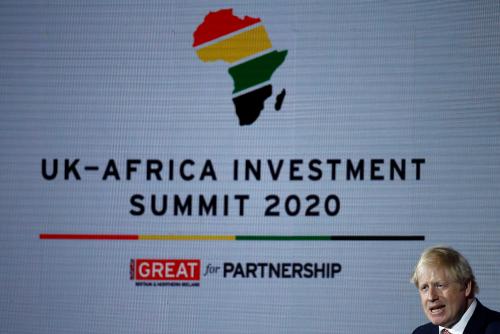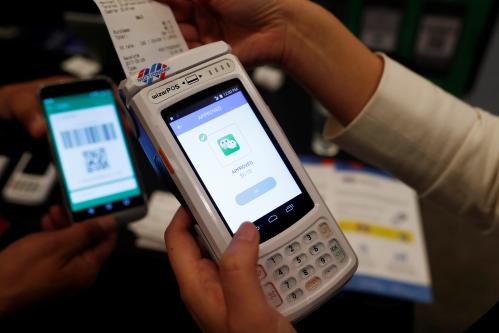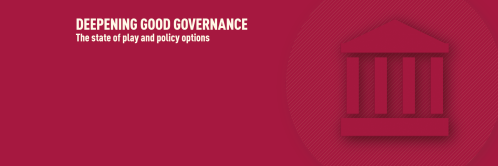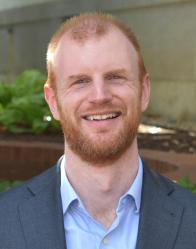Last week, the International Consortium of Investigative Journalists released a trove of documents uncovering a vast global network of shell companies tied to Isabel dos Santos, the daughter of Angola’s former president, who currently stands accused of amassing a multibillion-dollar fortune as a result of her close connections to the government.
The fact that a network of corruption and hidden wealth originated in Angola isn’t likely to raise many eyebrows. The country ranked 165 out of 180 in Transparency International’s latest Corruption Perceptions Index and the Basel Institute on Governance ranks it in the top 25 riskiest countries with respect to money laundering. For five of the past 10 years, Angola was listed as having “strategic deficiencies” by the Financial Action Task Force (FATF), an international standard setter of anti-money-laundering policy. By all the usual metrics that experts use to judge a country’s risk of harboring or generating illicit cash, Angola seems to fit the bill.
But what should raise eyebrows is the fact that dos Santos’ network—which covered 41 countries—managed to go undetected as long as it did, despite mainly operating in countries that are meant to have strong anti-money-laundering (AML) institutions designed to prevent, identify, and root out dirty money. One of the basic tenets of AML policy is to know your customer (KYC) and it seems that banks in the dos Santos network either didn’t know who they were dealing with, or didn’t ask the right questions as to where the money was coming from.
Using the data released by the ICIJ on the location of the shell companies controlled by dos Santos and her husband, Sindika Dokolo, I investigated whether certain types of jurisdictions were more likely to be part of the network than others.
First, let’s consider one of the latest metrics of how effective a country’s AML policies are: recent evaluations by the FATF’s regional bodies, known as “mutual evaluation reviews.” These assessments are conducted every few years to better understand whether a jurisdiction is implementing best practice in fighting money laundering, and, more recently, whether the jurisdiction’s AML institutions are likely to be effective. So far, these newer reviews have been conducted in around 90 countries.
Combining the effectiveness data with the location of companies in the dos Santos network reveals an awkward relationship: Jurisdictions that score high on FATF effectiveness were more, not less, likely to host companies linked to dos Santos. Even after controlling for GDP per capita and a country’s technical compliance with FATF recommendations, a one-standard-deviation improvement in a country’s effectiveness score is associated with a 16 percentage point increase in the chance it hosted a dos Santos-linked company. Similarly, few of the jurisdictions that were part of the network were ever placed on FATF’s watch list. In fact, only seven out of the 41 jurisdictions implicated in dos Santos’ entire network have ever been on the list in the past decade.
We see a similar relationship if we look at other measures commonly associated with illicit financial flows. Countries in the dos Santos network also had lower levels of financial secrecy (as measured by the Tax Justice Network), as well as lower levels of corruption as measured by the latest Transparency International Corruption Perceptions index. These relationships are also not unique to the Angolan scandal: Using data scraped from the Organized Crime and Corruption Reporting Project (OCCRP’s) on countries connected to a massive Kremlin-linked money laundering scheme—dubbed the Troika Laundromat—we can see that this scheme also largely stayed within countries with more robust institutions.
The paradox of money laundering institutions
These results reflect the paradox of money laundering institutions: The places that score well on these indicators are actually the places where people want to keep illicit wealth. They are places where money buys you nicer things (it is easier to party with Paris Hilton in Cannes than in Luanda, for instance). But, most importantly, they are places that allow money launderers to hide the origin of their assets under a sheen of legitimacy and respectability. Once you talk your way into the VIP area of a club using a fake ID, it is very unlikely anyone will later ask you to leave. These motivations were made clear in a recent interview with Sindika Dokolo, who noted that he routed his finances through offshore jurisdictions because it was very difficult for him to open up a bank account directly in the EU because of his direct association with Angola and the Democratic Republic of Congo.
First, these results should make us a little warier of how effective relatively rich, large economies really are at policing their financial systems, despite what the indicators say. Recent scandals like the Panama Papers, the Danske Bank scandal, and now the dos Santos scheme are making it harder to claim that everything is working as it should be. Regulators will continue to try and stay ahead of the game: The European Union—featured heavily in all these scandals—is in the process of upgrading its AML regimes through the 5th and 6th EU Money Laundering Directives. What remains to be seen is whether these regimes really improve the ability of the financial system to detect illicit wealth after it penetrates the EU economy, or if it just puts even more of an onus on stopping it from getting it in.
Second, with each of these scandals it becomes more apparent that the ability to safely stash money in more advanced economies and tax havens imposes a negative externality on the developing world. To make things worse, developing countries are more likely to be punished for not meeting AML standards: Most of those on FATF’s watchlist of noncompliant countries are poor countries that are more likely to be sources of illicit wealth than destinations. Being added to the watchlist does make countries more serious about AML, but it also potentially carries significant costs. Given that it is likely that much of cross-border illicit finance flows from poor countries to richer ones, it is unfortunate that poorer countries get penalized when richer ones still have a long way to go to clean up their own financial systems.
Understanding how well our AML institutions work is difficult, because the very outcome we care about is very hard to observe. Leak by leak, we’re starting to learn where our policies are working well and where they desperately need more attention.
Note: All the data and Stata code used in this analysis is available for download here.
The Brookings Institution is committed to quality, independence, and impact.
We are supported by a diverse array of funders. In line with our values and policies, each Brookings publication represents the sole views of its author(s).










Commentary
Angola and the money laundering paradox
January 28, 2020